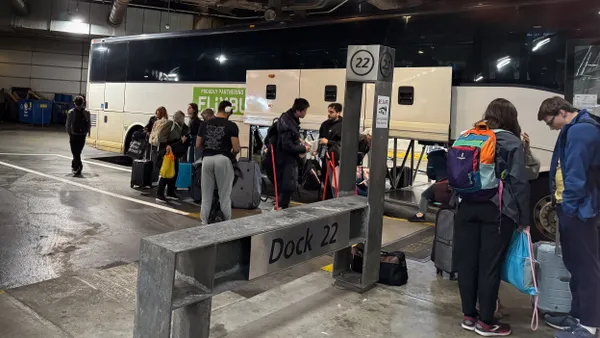For all of the hype around smart cities, "smart states" seem to stand in the shadow. Yet, considering the influence that a state's eco-friendliness has on its cities, that's an oversight.
States can empower or hinder their cities in achieving projects like a shift to renewable energy, encouraging autonomous vehicles or upgrading mass transit. For example, Portland, OR, which just announced a 100% renewable energy goal, has the opportunity to build off the recent bill passed by Oregon’s governor phase out coal generation imports by 2035.
A new study by WalletHub takes a look at the environmental policies in all 50 states, and gives credit to the ones that prove to be the most "green." Using the three dimensions of environmental quality, eco-friendly behaviors and climate-change contributions with 20 metrics from clean air levels to lowest energy use per capita. Each metric was graded on a 100-point scale, with the higher the number reflecting the greenest behavior. Vermont came in at No. 1 for the overall ranking, with Wyoming coming in last.
Wallethub, a site focused on finances, points out that climate change could cost the country billions of dollars from damage in the future, but spending money on smart projects could save money and create jobs. South Bend, IN's smart wastewater management saved the city millions while also minimizing pollution, and San Francisco has a similar project with its wastewater and sewer system. Chattanooga, TN installed a self-healing electric grid that worked more efficiently, reduced outage and saved money.
The study also provides plenty of surprises. Wyoming ranked first for air quality with California coming last, which is likely explained by the vast difference in population in the two states and less explained by policy. California is also currently home to 8 of the 10 cities with the worst air pollution in the U.S. A study by American Lung Association found that 166 million Americans, over half the public, live in counties where they are exposed to unhealthful levels of pollutants. But overall, air quality continues to trend upward.
Maine, Montana, Oregon, South Dakota and Washington were tied for states with the highest level of energy coming from renewable sources. Four of the five top states have renewable power standard laws on the books, which require electricity suppliers to use a certain amount of their power with renewables — and those four states have all met their goals. South Dakota has a decent amount of wind power being generated with a voluntary program, and Maine is currently producing about 40% of the electricity through renewables, the highest level in the country.
Delaware, the state that came in last for renewable energy, also has a RPS law with a goal of 25% by 2025 but has a high overall per capita use of energy due to energy-intensive food-processing, petroleum refining and chemical and plastics manufacturing industries.
The biggest gap between best and worst performance in any category was percentage of recycled municipal solid waste (MSW), with Maine besting Louisiana by a factor of 48 times. Maine is currently testing food waste collection programs, which would further expand its recycling capacity. In 2014, almost 40% of MSW was recycled in Maine.
Perhaps unsurprisingly, New York has the lowest energy and gasoline use per capita. Dense urban cities are more energy efficient than rural or suburban landscapes and New York has almost nine million of the state’s 20 million residents living in high-density New York City. David Owens calls Manhattan the greenest place in America in his book about green cities, Green Metropolis. Combine that with the millions more that live in New York’s commutable areas north and east of the city and car driving doesn’t have to be a regular event. New York City has more people living in it than the bottom three states for lowest energy use per capita, North Dakota, Wyoming and Louisiana (which add up to just over six million).
While this study isn't a blueprint of which states hold the greenest and smartest cities, it's an indicator of which states are leading the charge in pushing their cities toward a smart future. As more cities advance, it will be crucial for states to keep up with eco-conscious energy, water, waste and other policies to stay ahead.











